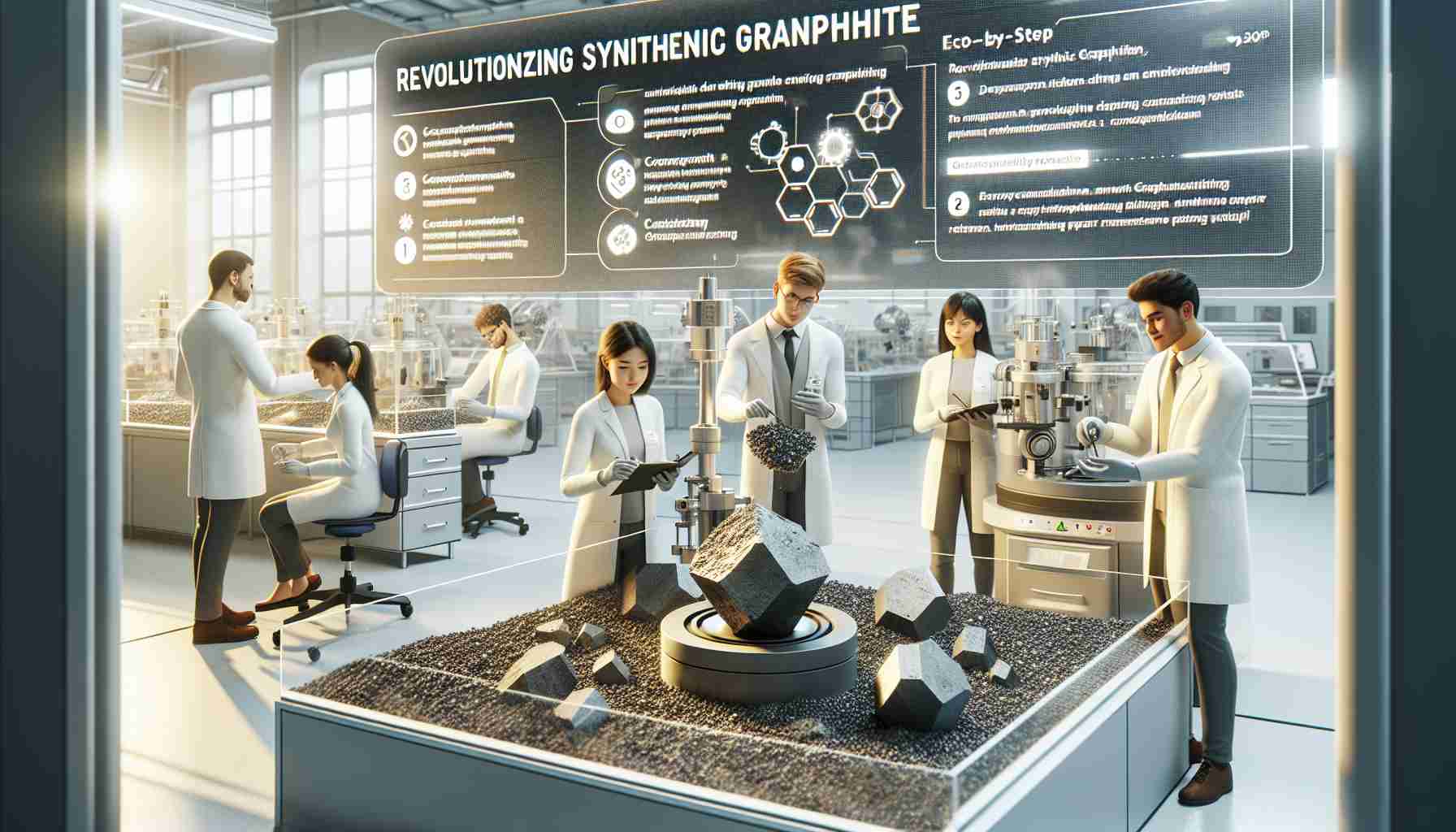- Texas A&M University is leading a breakthrough in synthetic graphite production, promising a cleaner, more efficient energy future.
- Funded by a $3 million grant from ARPA-E, researchers focus on converting petroleum coke, an oil refining byproduct, into synthetic graphite.
- Catalytic graphitization significantly reduces energy use and carbon emissions compared to traditional methods, cutting down temperatures and time required.
- The technology has profound environmental and economic impacts, reducing U.S. dependence on foreign graphite supplies.
- Dr. Micah Green’s team is advancing this innovation from lab success to large-scale industrial application.
- The project supports ARPA-E’s VISION OPEN initiative by enhancing domestic supply chains and transforming waste into valuable resources.
- If scaled, this process positions the U.S. as a leader in sustainable graphite production, contributing to a greener future.
A seismic shift in synthetic graphite production is emerging from Texas A&M University, promising a cleaner, more efficient future for the energy industry. The research, supported by a $3 million grant from the Advanced Research Projects Agency–Energy, pioneers an innovative method to transform petroleum coke, a byproduct of oil refining, into synthetic graphite—a crucial component in the batteries that power everything from smartphones to electric cars.
Traditional methods for converting petroleum coke require energy-intensive processes with temperatures soaring to 5,000°F. Enter catalytic graphitization. This groundbreaking technique slashes both the energy and time demands, significantly reducing carbon emissions associated with graphite production. The environmental and economic implications are profound, offering a potential reduction in the United States’ dependency on foreign graphite supplies.
Dr. Micah Green and his team are at the helm, refining the scientific magic that makes this possible. Early lab experiments have delivered promising results. Yet, the road to revolutionizing industry still lies ahead, with the team working tirelessly to scale their discovery from the lab to large-scale application.
As the project aligns with ARPA-E’s VISION OPEN initiative, an overarching aim is to not just cut emissions but also enhance domestic supply chains. Imagine petroleum coke transformed into clean, valuable carbon products instead of languishing as a pollutant.
If successfully scaled, this innovative process positions the United States at the forefront of sustainable graphite production, turning waste into valuable resources while paving the way for a greener future. This is more than just an advancement in technology; it’s a leap towards a sustainable tomorrow, reimagining how we power our lives.
The Future of Sustainable Energy: Texas A&M’s Groundbreaking Graphite Innovation
How Catalytic Graphitization Could Transform Energy Production
The synthetic graphite landscape is undergoing a transformation thanks to Texas A&M University’s pioneering research. This innovation holds the potential to redefine how we produce a key component of batteries crucial to modern technology, such as smartphones and electric vehicles. Here, we explore the real-world impacts, industry trends, and the exciting possibilities this breakthrough could unlock.
How-To: Steps & Life Hacks in Catalytic Graphitization
1. Understand Petroleum Coke: Begin with an understanding of petroleum coke, a carbon-rich byproduct of oil refining. This material is pivotal in the catalytic graphitization process.
2. Catalytic Graphitization Process: Replace traditional high-temperature methods with catalytic graphitization. Introduce a catalyst to lower temperature needs, cutting down the energy input and emissions.
3. Scale from Lab to Industry: Pilot projects need scaling to industrial levels, requiring collaboration between academic researchers and industrial partners to adapt laboratory protocols for large-scale manufacturing.
4. Utilize Renewable Energy: For those in industrial applications, consider using renewable energy sources to power the process further reducing carbon footprint.
Real-World Use Cases
– Battery Production: With reduced costs and emissions, electric vehicle battery manufacturers can source more environmentally-friendly graphite domestically.
– Electronics Manufacturing: Smartphone and laptop manufacturers can diminish their supply chain emissions and costs, making their products more sustainable.
Market Forecasts & Industry Trends
– Graphite Demand Surge: With the global shift towards electric vehicles and renewable energy, the demand for graphite is expected to grow. Synthetic graphite could meet this demand more sustainably.
– Decentralized Supply Chains: By reducing dependency on foreign graphite, nations can localize their supply chains, enhancing security and reducing geopolitical risks related to material sourcing.
Pros & Cons Overview
Pros
– Significantly reduced carbon emissions
– Lower energy requirements and costs
– Enhanced domestic supply chain security
– Potential economic benefits from utilizing petroleum coke
Cons
– Initial high-cost of research and development
– Scale-up challenges from lab to large-scale production
– Potential resistance from traditional graphite industries
Security & Sustainability
Catalytic graphitization could enhance energy security by ensuring domestic production in alignment with sustainability goals. The process not only turns waste into resources but aligns with SDG 12: Responsible Consumption and Production.
Insights & Predictions
As research continues to develop, we can expect:
– Policy Support: Increased governmental backing as this aligns with carbon reduction goals.
– Investment Growth: Investment in cleaner technology and sustainable materials processing will likely increase.
– Global Impact: If adopted globally, similar processes could significantly reduce industrial emissions.
Quick Tips for Application
– Early Adoption: For companies in the battery and electronics markets, consider investing early in technology and partnerships to gain a competitive edge.
– Collaboration: Join forces with academic institutions to stay at the forefront of technological developments.
– Sustainability Metrics: Start implementing frameworks to measure and improve sustainability impacts in current production processes.
For further information, you might explore the resources at Texas A&M University and ARPA-E.
By harnessing the innovative potential of catalytic graphitization, we could ensure a cleaner and more sustainable future, turning what was once waste into one of the cornerstones of modern energy infrastructure.














